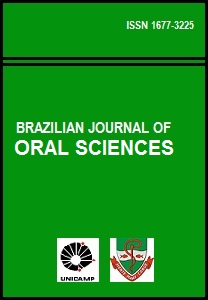Abstract
Aim: To verify the relationship between orofacial pain and absenteeism in workers of slaughter and meat processing industries in the Southern region of Brazil. Methods: A cross-sectional study, with the random sample of 401 workers of slaughter and meat processing industries in the Southern region of Brazil, was carried out. A questionnaire referred to the situation of absenteeism caused by nine different types of orofacial pain and also the amount of time the employee was kept from work. Results: Only 60 workers (15%) reported having missed work due to orofacial pain in the six months prior to the study. The prevalence of absenteeism resulting from orofacial pain was of 15%. The types of orofacial pain that resulted in absenteeism were: spontaneous toothache (9.7 %); toothache caused by cold or hot liquids or by sweet foodstuff (6.5%) and pain around and behind the eyes (3.2%). There was a predominance of absenteeism in half and full work shifts for the types of orofacial pain experienced. Associations between absenteeism from induced toothache and gender (p < 0.05), absenteeism and spontaneous toothache and family income (p = 0.011), and between absenteeism and the self awareness of their oral health condition, as well as the nine types of orofacial pain (p < 0.001) were observed. Conclusions: The prevalence of absenteeism as a result of orofacial pain was low.The Brazilian Journal of Oral Sciences uses the Creative Commons license (CC), thus preserving the integrity of the articles in an open access environment.
Downloads
Download data is not yet available.

